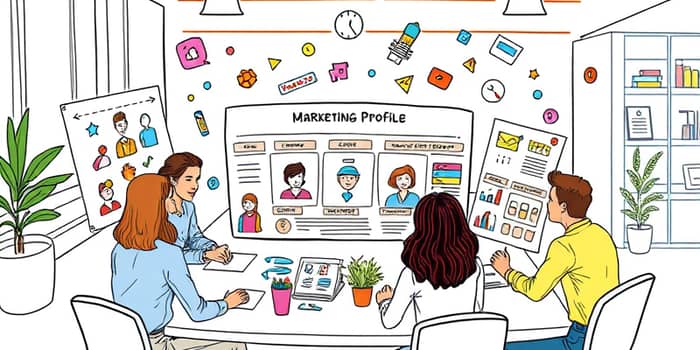
In today’s competitive marketplace, understanding your audience is more than a marketing buzzword—it’s a strategic imperative. By crafting detailed customer personas, you can fine-tune your messaging to resonate on a personal level and drive meaningful engagement. When teams align around these fictional yet data-driven profiles, they unlock clarity, relevance, and empathy in every campaign. This guide explores how to create and apply customer personas to amplify your communication and deliver results that move the needle.
Customer personas serve as realistic representations of your ideal customer, grounding marketing efforts in tangible insights rather than assumptions. These profiles bring together demographic, psychographic, and behavioral traits to humanize abstract data.
By mapping out characteristics such as age, occupation, values, and daily challenges, personas enable teams to empathize with their audience. This empathy, in turn, fuels more effective messaging, product features, and user experiences tailored to specific segments. An investment in persona development translates directly into alignment across marketing, sales, and product teams, ensuring every touchpoint feels personalized and purposeful.
A robust persona template ensures consistency and depth. At a minimum, each profile should capture:
These items form the backbone of each persona, making them actionable reference points for crafting targeted messages that speak directly to real needs.
Building personas is a structured process that balances qualitative depth with quantitative validation. Follow these steps to bring your profiles to life:
Iterative review ensures that your personas remain accurate and relevant as markets and customer expectations evolve.
Different sectors reap unique benefits from persona-driven strategies. In banking, profiles like “ETF Ellen” and “Trader Tim” go beyond basic demographics to segment by investment objectives and risk tolerance. This approach leads to tailored product recommendations and more persuasive email campaigns.
In the automotive world, personas such as “Commuter Kate” and “Weekender Will” help design messaging around daily efficiency or leisure adventures. Meanwhile, a B2B SaaS company might build a Customer Success Manager persona focused on onboarding challenges and expertise gaps, guiding content creation and feature prioritization.
Companies that embrace personas report dramatic improvements in engagement and efficiency. Persona usage makes websites 2–5 times easier to use and more effective for target audiences. When persona-driven content is deployed to cold leads, engagement can jump up to persona-driven content increases engagement by 6 times.
To visualize these benefits, consider the following summary:
Moreover, email campaigns aligned with well-defined personas often double open rates and lift click-through rates by up to five times. Over 90% of companies exceeding revenue targets document buyer personas, and 71% credit formal persona documentation with surpassing goals. Implementing these profiles also helps reduce marketing and sales costs by 10-20% while accelerating deal closures.
Once personas are in place, the real magic happens in execution. Use persona insights to tailor your tone of voice, word choice, and content format. For example, a time-strapped professional persona may respond best to concise messaging highlighting speed and convenience, while a risk-averse buyer might need data-driven proof points and trust signals.
Translate each persona’s top objections into messaging pillars. Address common barriers directly: reassure with social proof, simplify complex processes, or showcase step-by-step guides. By speaking the language of each segment, you create a compelling narrative that resonates and drives action.
Missteps in persona development can undermine the entire process. Avoid these traps and follow proven guidelines:
Creating and maintaining personas is a team sport. Leverage free and popular template tools like Figma, Miro, or Xtensio to design visually engaging persona cards that live on shared boards. Encourage collaboration among marketing, UX, product, sales, and customer support teams to gather diverse perspectives and keep personas current.
Workshops, regular check-ins, and shared documentation help embed persona-driven decision-making into everyday workflows, transforming them from static profiles into dynamic guides for strategic initiatives.
Persona-building is not a one-and-done project. As your customer base grows and market dynamics shift, revisit your profiles to incorporate fresh insights. Ongoing interviews, data analytics reviews, and customer feedback loops enrich your personas and ensure your messaging remains relevant and impactful.
With a culture of continuous improvement, personas evolve alongside your business, fueling sustainable growth and customer loyalty.
By investing in the design and application of customer personas, organizations unlock personal, purposeful, and precisely aligned messaging, foster deeper connections, and drive measurable results. Start today by gathering data, crafting initial profiles, and weaving persona insights into every piece of content. The difference will be clear: your messaging will feel personal, purposeful, and precisely aligned with the needs of those you serve.
References













